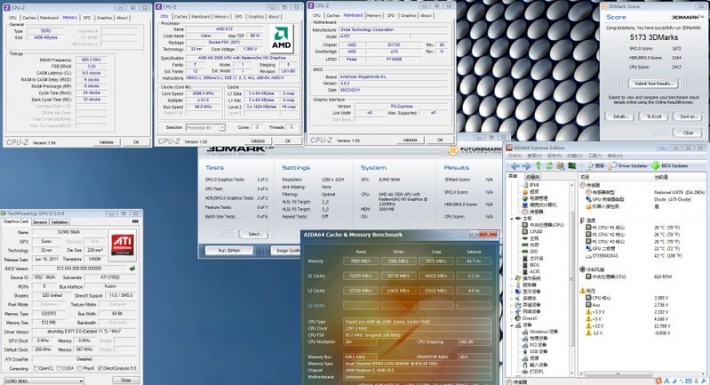
We found this processor to be able to play back Blu-ray discs just fine and if you are building a HTPC or a system where gaming graphics isn’t a concern then it is all you are going to need. The AMD A6-3650 is a robust little 32nm ‘Llano’ APU that can do anything it’s big brother can if you give it a little extra time. We get to review all of the high-end parts that cost a million dollars, but at the end of the day some of the most fun we get to have is with processors like this. We were able to reach 3.1GHz (119MHz x 26) on the A6-3650 before needing to increase the APU voltage though and that is a solid 500MHz overclock. If you plan on running overclocked 24/7 we can see the USB 3.0 issue being a concern to some people. Neither of this were a big deal to us as we had a DVI input on our display and we didn’t need to use any of the USB 3.0 headers for our testing. The first being that analog displays stopped working after a mild overclock and the second being that once the APU Voltage was increased that the SuperSpeed USB 3.0 ports on the board stopped working. This APU has gobs of overclocking room in it, but we did encounter a couple issues that we have never seen before. We didn’t spend much time overclocking the Radeon HD 6530D GPU, but we increased the clock speed on that from 443MHz up to 600MHz with no issues at all. Overclocking performance on the AMD A6-3650 was nothing short of amazing! We were able to get this 2.6GHz processor all the way up to 3.8GHz with rock solid CPU performance. With the Intel Z68 platform it blazes through many of the CPU benchmarks, but is unable to play game titles at decent resolutions and the GPU is just DirectX 10 capable. The AMD A75 can play decent game titles without a dedicated graphics cards, but some CPU intensive tasks might take a bit longer. At the end of the day it really depends on what you are trying to do with your system as to which one is right for you. The Intel Z68 platform performs better in the CPU tasks and the AMD A75 platform performs better in the GPU tasks. When it comes to price versus performance the AMD A75 ‘Lynx’ platform prices out as being less expensive than its direct competitor for both the processor and the motherboard. The AMD A8-3850 still ruled the roost when it came to GPU performance since it has more Radeon cores that are running at higher clock speeds. It was found to be slower than the Intel Core i3 2120, Core i3-2105 and AMD A8-3850 processors when it came to CPU benchmarks, but it was found to be faster than the Intel Core i3-2120, Core i3-2105 and Core i7-2600K in GPU benchmarks. The maximum analog resolution (when using a VGA cable) is 2048×1536ġNote, that to actually achieve a resolution of 2560×1600 with a DVI cable, you must use a Dual-Link cable, either integrated (-I) or digital only (-D) will work, as long as it doesn’t have that gap in the middle of the pins.The AMD A6-3650 ‘Llano’ APU performed exactly how we expected it to once we got it on the test bench.The maximum digital resolution (using a DVI or HDMI cable) is 2560×1600 1.That card supports different resolutions depending on what mode the output is and what cable is being used (figure 3): Even better, the answer is right there in the search results (figure 2). Google 6530D resolution to get this page (figure 1).


Nontheless, fortunately, specifications are not difficult to find. Curiously, resolution information is not specified in comparison charts for the AMD cards, nor even for the series-specific charts. You’re right, not only do they not specify details in that page, they don’t even give specifications in the video-card pages either (I guess for some reason, AMD just doesn’t think users need to know that stuff ¬_¬).


 0 kommentar(er)
0 kommentar(er)
